CrossAsia Talks: Prof. Dr. Paul U. Unschuld 25.5.2023
(See English below)
Wir freuen uns Ihnen den Vortrag von Prof. Dr. Paul U. Unschuld (Charité Berlin): “Historical Resonances Illuminated – The Chinese Handwritten Health Care Volumes of the 16th through the 20th Century (Sammlung Unschuld, Staatsbibliothek zu Berlin) as Resources of Knowledge” am 25.5.2023 ab 18 Uhr im Dietrich Bonhoeffer-Saal (Potsdamer Straße 33, 10785 Berlin) ankündigen zu dürfen. Der Vortrag wird ein Schlaglicht auf chinesische Medizintexte werfen.
With the acquisition of the “Sammlung Unschuld” the Staatsbibliothek zu Berlin has significantly expanded its holdings of East Asian manuscripts. The Sammlung Unschuld includes more than 1000 volumes, dating from the 16th century to the mid-20th century, of personal records on health care, handwritten by professional physicians and itinerant healers, by the owners of apothecary shops and private households, by exorcists and Buddhists, students and other concerned individuals. These are documents opening a window on the reality of professional and lay health care in pre-modern China. They serve to correct an ahistorical image associated with the spread of so-called “Traditional Chinese Medicine” in the West. In addition, they offer countless clues on social life and natural knowledge not found in printed texts and other sources of the time. The Institute for Chinese Life Sciences (ICL) of Charité Universitätsmedizin Berlin has explored these texts from a medical-historical perspective. At the same time, in collaboration with the molecular-biological research group Bicoll in Martinsried and Shanghai and funded by the Federal Ministry of Education and Research, it has examined more than 40 000 therapeutic recipes recommended in these volumes for hints at substances that may have a value in a science-based health care system. This talk will address and portray both the historical and the application oriented agenda pursued by ICL.
Die Vortragssprache ist Englisch. Wir bitten Sie um Voranmeldung für den Vortrag unter: ostasienabt@sbb.spk-berlin.de und eine kurze Mitteilung falls Sie einen barrierefreien Zugang benötigen. Die Veranstaltung wird gefilmt.*
Der Vortrag wird darüber hinaus via Webex gestreamt und aufgezeichnet. Sie können am Vortrag über Ihren Browser ohne Installation einer Software teilnehmen. Klicken Sie dazu unten auf „Zum Vortrag“, folgen dem Link „Über Browser teilnehmen“ und geben Ihren Namen ein.
Alle bislang angekündigten Vorträge finden Sie hier. Die weiteren Termine kündigen wir in unserem Blog und auf unserem Twitteraccount an.
—
We are pleased to announce the lecture by Prof. Dr. Paul U. Unschuld (Charité Berlin): “Historical Resonances Illuminated – The Chinese Handwritten Health Care Volumes of the 16th through the 20th Century (Unschuld Collection, Staatsbibliothek zu Berlin) as Resources of Knowledge” on 25.5.2023 from 6 pm in the Dietrich Bonhoeffer-Saal (Potsdamer Straße 33, 10785 Berlin). The lecture will shine a spotlight on Chinese medical texts.
With the acquisition of the “Sammlung Unschuld” the Staatsbibliothek zu Berlin has significantly expanded its holdings of East Asian manuscripts. The Sammlung Unschuld includes more than 1000 volumes, dating from the 16th century to the mid-20th century, of personal records on health care, handwritten by professional physicians and itinerant healers, by the owners of apothecary shops and private households, by exorcists and Buddhists, students and other concerned individuals. These are documents opening a window on the reality of professional and lay health care in pre-modern China. They serve to correct an ahistorical image associated with the spread of so-called “Traditional Chinese Medicine” in the West. In addition, they offer countless clues on social life and natural knowledge not found in printed texts and other sources of the time. The Institute for Chinese Life Sciences (ICL) of Charité Universitätsmedizin Berlin has explored these texts from a medical-historical perspective. At the same time, in collaboration with the molecular-biological research group Bicoll in Martinsried and Shanghai and funded by the Federal Ministry of Education and Research, it has examined more than 40 000 therapeutic recipes recommended in these volumes for hints at substances that may have a value in a science-based health care system. This talk will address and portray both the historical and the application oriented agenda pursued by ICL.
The lecture will be held in English. We kindly ask you to register in advance at: ostasienabt@sbb.spk-berlin.de, and to let us know if you need barrier-free access. The event will be filmed.*
The lecture will also be streamed and recorded via Webex. You can take part in the lecture using your browser without having to install a special software. Please click on the respective button “To the lecture” below, follow the link “join via browser” (“über Browser teilnehmen”), and enter your name.
You can find all previously announced lectures here. We will announce further dates in our blog and on Twitter.


 SBB-PK
SBB-PK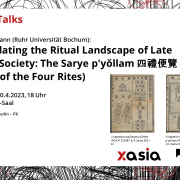 SBB-PK
SBB-PK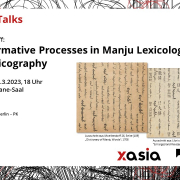 SBB-PK
SBB-PK
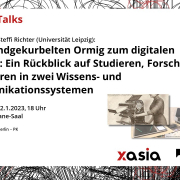
 SBB; Illustrated Architecture
SBB; Illustrated Architecture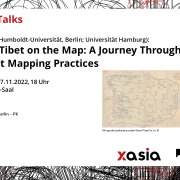
 SBB-PK
SBB-PK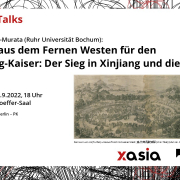 SBB-PK
SBB-PK